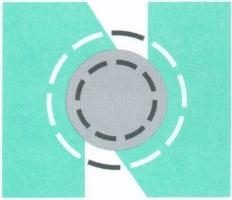Brief Chronology of the Development of the Neuman Systems Model
Model Development
1970
NSM developed as a graduate course guide to integrate four variables of man.
1972
Publication of “A model for teaching total person approach to patient problems”,Nursing Research, May/June.
1974
Refined model published in Riehl & Roy, Conceptual Models for Nursing Practice. Model classified as a systems model, and titled “The Betty Neuman Health-Care Systems Model: A Total Person Approach to Patient Problems”.
1980
Riehl & Roy, Conceptual Models for Nursing Practice, 2nd edition. Practice tools for NSM implementation added, and term “patient” changed to “client”.
1982
Neuman’s first book, The Neuman Systems Model: Application to Nursing Education and Practice. Nursing process format & care plans included; Chapters include applications of the NSM to individuals, families and community; A total approach to client care.
1995
The Neuman Systems Model, 2nd ed. Created environment added to expand concept of environment. Spiritual variable added to diagram as fifth variable.
1995
The Neuman Systems Model, 3rd ed. Chapters on culture, international use of the Model, applications to administration and construction of conceptual-theoretical-structures for research added.
2002
The Neuman Systems Model, 4th ed. Co-edited by Drs. Betty Neuman and Jacqueline Fawcett. Guidelines for clinical practice, model-based research, education and administration, plus appropriate tools highlight this edition.
2010
The Neuman Systems Model, 5th ed. Co-edited by Drs. Betty Neuman and Jacqueline Fawcett. Chapters include an expansion of the client system as an individual, family, group and community. Highlights include advances in thinking about the created environment, reconstitution, and critical thinking within the context of the NSM. Middle-range theory development and integrative theorizing conclude the edition.
2017
Neuman Systems Model: Celebrating Academics Practice Partnerships. Co-edited by Sarah Beckman and Jacqueline Fawcett. Demonstrates the continued international popularity, validity, and comprehensiveness of the Neuman work. The Model provides a wholistic, global, culturally relevant perspective for inter-disciplinary health care. A special feature of the book is the inclusion of contributing authors with various nursing education and practice backgrounds in conjunction with nursing students contributors. The structure of the book chapters -- with content addressing the quality and safety education for nurses (QSN) followed by example of academic-practice partnerships -- is an excellent format for sharing and validating information, and for identifying professional nursing practice responsibilities. This inclusionary approach to the book contents is a unifying factor that represents a comprehensive strategy for healthcare delivery in all cultures. (Neuman and Freiburger 2017)
Sources for further information
The five Neuman texts listed above contain in-depth information about the history of the development of the model, and each text presents original applications of the model to education, practice, administration and research that have evolved through the years.
Chapter 7 in the text by Jacqueline Fawcett, (2005). Contemporary Nursing Knowledge: Analysis and Evaluation of Nursing Models and Theories, 2nd ed., F.A.Davis, provides a detailed analysis and evaluation of the Neuman’s Systems Model and an extensive bibliography.
The original diagram of the model, copyright in 1970, has not been altered other than adding the spiritual variable in 1995 and can be found in the Neuman textbooks.
The overall contributions of the model to the discipline of nursing are summarized by Neuman: “The Neuman Systems Model fits well with the wholistic concept of optimizing a dynamic yet stable interrelationship of spirit, mind, and body of the client in a constantly changing environment and society” (Neuman & Young, 1972).
